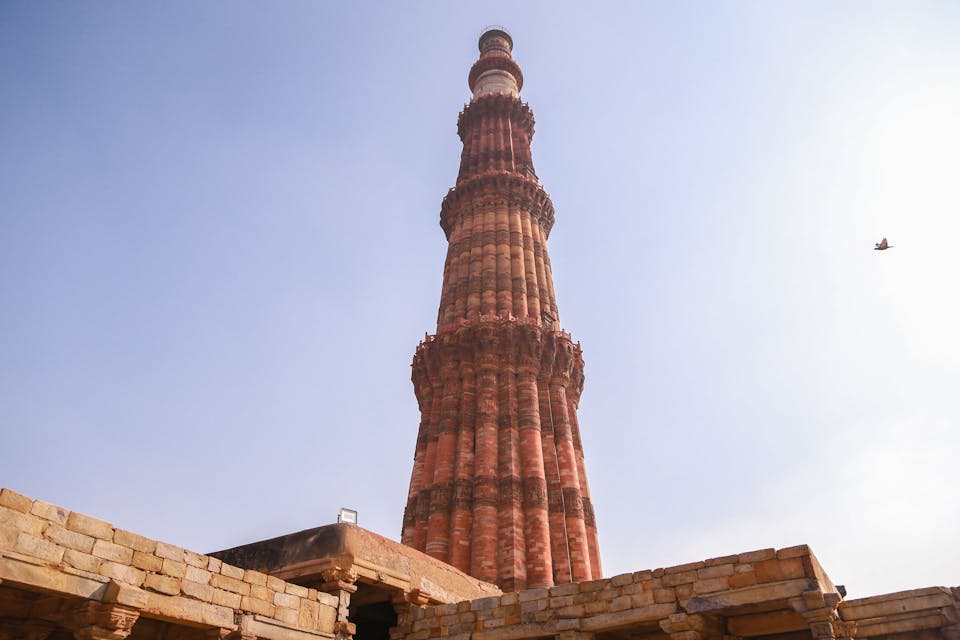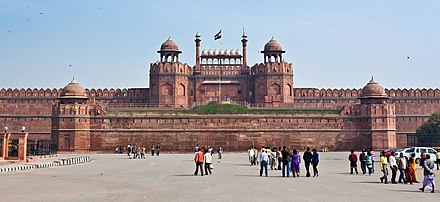Why History Buffs Love Qutub Minar

Delhi, the heart of India, is a city that bridges two different worlds. The old and the new. From the labyrinthine streets of Old Delhi to the orderly avenues of New Delhi, the city embodies a past that is filled with alluring mysteries and magnificent monuments. Here are the top 10 must-see monuments that capture the essence of Delhi’s enduring legacy.
1. The Red Fort
The majestic Red Fort is not just a monument; it’s a symbol of India’s sovereignty, hosting the country’s Independence Day celebrations each year. Its red sandstone walls have witnessed centuries of history and stand as a testament to the grandeur of the Mughal Empire.

2. Qutub Minar
Standing tall at 73 meters, the Qutub Minar is an architectural marvel of ancient India. This UNESCO World Heritage Site is adorned with intricate carvings and Quranic inscriptions, offering a glimpse into the Islamic heritage of India.

🕌✨🇮🇳
Why History Buffs Love Qutub Minar
Qutub Minar, located in the Mehrauli area of Delhi, is a favorite among history buffs for several reasons. Let’s explore why this iconic monument holds a special place in the hearts of those who appreciate the rich history of India.
1. Ancient Architecture
Qutub Minar is a prime example of ancient Indian architecture. Built in the early 13th century, it showcases the mastery of the craftsmen of that era. The intricate carvings, detailed inscriptions, and the overall design of the minaret are a testament to the skill and creativity of the artisans of that time.
2. Historical Significance
Qutub Minar has witnessed centuries of history unfold before its towering presence. It was initially constructed by Qutub-ud-din Aibak, the founder of the Delhi Sultanate, and later expanded by his successors. The minaret has survived numerous invasions, wars, and natural calamities, making it a living witness to Delhi’s tumultuous past.
3. Islamic Heritage
The Qutub Minar complex is not just a single tower; it is a collection of several historically significant structures. The Quwwat-ul-Islam Mosque, located within the complex, is one of the earliest mosques built in India. Its architectural elements, such as the intricately carved pillars and the beautiful arched entrances, reflect the influence of Islamic design.
4. UNESCO World Heritage Site
Qutub Minar’s historical and architectural significance has earned it the prestigious title of a UNESCO World Heritage Site. This recognition highlights its universal value and the importance of preserving it for future generations. History buffs appreciate the opportunity to explore and learn from a site that has been recognized on a global scale.
5. Cultural Symbol
Qutub Minar has become an iconic symbol of Delhi’s rich cultural heritage. It represents the fusion of different architectural styles and cultural influences that have shaped the city over the centuries. History buffs are drawn to this monument as it encapsulates the essence of Delhi’s diverse history and serves as a reminder of the city’s glorious past.
Visiting Qutub Minar is not just a journey into the past; it is an immersive experience that allows history buffs to connect with the stories and legacies of the people who came before us. The intricate carvings, the towering height, and the serene atmosphere of the complex make it a must-visit destination for anyone interested in unraveling the mysteries of Delhi’s history.
So, if you’re a history buff planning a trip to Delhi, make sure to include Qutub Minar in your itinerary. It will undoubtedly leave you awe-inspired and deepen your appreciation for the rich historical tapestry of India.
🕌✨🇮🇳
